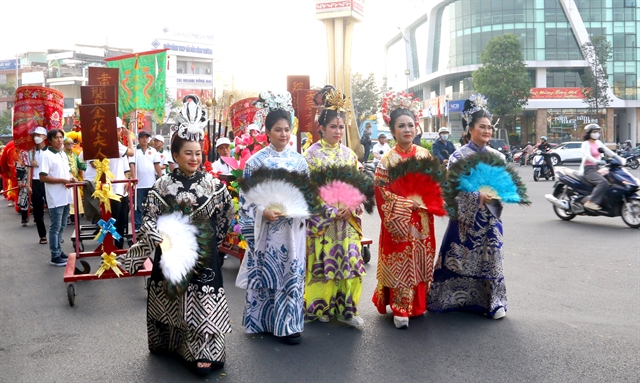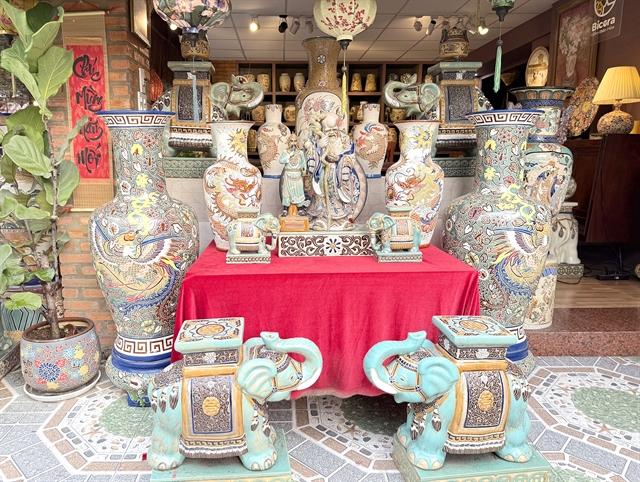Đồng Nai Province has outlined its plans for cultural development for the 2025-2030 period to build a comprehensive system of cultural values.

POPULAR FESTIVAL: The Ông Pagoda Festival, one of the most popular religious rituals in Đồng Nai Province, welcomes around 50,000 domestic and international tourists. VNA/VNS Photo by Công Phong
ĐỒNG NAI The southern province of Đồng Nai has outlined its plans for cultural development for the 2025-2030 period to build a comprehensive system of cultural values.
The move aims to preserve and promote cultural heritage in the province, and enhance local people’s accessibility to culture and their cultural and spiritual life.
The programme targets to improve operational efficiency in cultural institutions and facilities at all levels, enhance digital transformation, and increase the culture budget up to two per cent of the province’s annual budget revenue.
It also focuses on the restoration and embellishment of 95 per cent of special national heritage relics and 75 per cent of national heritage relics in the province, and ensuring that 75 per cent of people in remote areas and ethnic minority people engage in cultural activities.
According to Lê Thị Ngọc Loan, director of the Department of Culture, Sports and Tourism, after the merger with Bình Phước Province, Đồng Nai Province sees an expansion in administrative boundaries, cultural diversity and historical depth.
The diversity of traditional rites and customs of ethnic groups and the large number of historical sites enrich the province’s cultural values and motivate its development.
Loan said the cultural sector will take priority in key cultural infrastructure, including restoration and embellishment of local historical and cultural sites.
The province will promote the traditional culture of ethnic groups in association with the sustainable development of tourism, and call for investment in infrastructure and facilities related to cultural heritage relics and tourist sites.
Huỳnh Văn Tới, a council member of the HCM City University of Culture, said the preservation and promotion of culture and the traditional value of Đồng Nai is not only the cultural sector’s task but also the administrative authorities' and each citizen’s responsibility. It is aimed at developing a spiritual foundation and soft power for sustainable development of the province, preserving its own identity in the era of international integration.

TRADITIONAL CERAMICS: Biên Hoà ceramics is known for “vert de Bien Hoa” glaze, which is used for making flower vases, statues, or roof tiles. VNS Photo by Phương Mai
After the administrative boundary merger, Đồng Nai has a rich tangible and intangible heritage system with 1,500 recognised relics located across 95 urban wards and rural communes.
As of July 2025, the province has six special national relics, 41 national relics, and 72 provincial relics. Around 400 festivals and rituals are annually held.
Local authorities have restored and embellished many national relics, such as the Trấn Biên Temple of Literature and the Ông Pagoda in Trấn Biên Ward.
The Trấn Biên Temple was built in 1715 to honour Confucius and serve as an educational centre. It was the first temple of its kind in the South. It was demolished in 1861 and restored in 1998.
The venue has been upgraded into a cultural space offering different activities such as heritage education programmes, history quizzes, cultural exhibitions, and traditional art performances.
QR code, 3D Mapping, and 3D hologram are also applied to provide digital images and information of the temple to help visitors understand more about the site.
The Ông Pagoda was built in 1684 next to the Đồng Nai River and was the first Chinese pagoda in the Southern region. The pagoda’s festival, which is annually held on the 10th day of the first lunar month, welcomes around 50,000 domestic and international tourists.
In addition, Đồng Nai focuses on preserving and promoting the traditional craft of Biên Hòa ceramics, which has existed along the basin of the Đồng Nai River for over 300 years.
Biên Hòa ceramics is known for “vert de Bien Hoa” glaze, a combination of ash glazes and copper alloys, which emerged in the 1920s. It is used for making big flower vases, statues, or roof tiles.
In April, the province hosted the first Biên Hoà – Đồng Nai Traditional Ceramics Festival to honour the traditional craft and introduce exquisite ceramic products used as decorative or fine art items. VNS